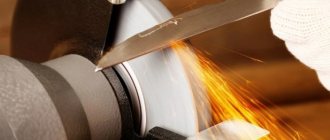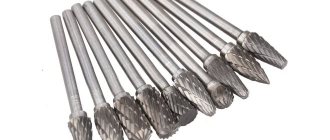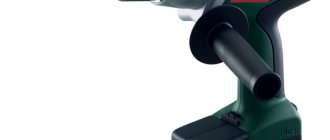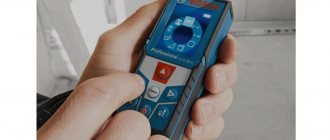Radiation dosimeter rating
Radiation measurements using a dosimeter are carried out indoors, outdoors, and various objects are also checked. Thanks to a dosimeter for measuring radiation, the following parameters can be determined:
- The degree of contamination with radioactive substances;
- The total amount of radioactive substances in products;
- Background gamma degree.
The design of a typical dosimeter includes the following elements:
- Detector or sensor. There may be several of them placed inside one device to increase the efficiency of the change.
- Removable, replaceable filters.
- Radiation dose indicating device.
The main element responsible for measuring radiation is the sensor. There are several types of sensors capable of measuring alpha, beta, gamma, and X-ray radiation. The detector converts the received radiation into an electrical signal, which is then processed.
When using a dosimeter, you need to take into account that there is a natural background emitted by natural sources, for example, the sun. It is defined as the dose rate (i.e. the amount of radiation in a certain period of time) at a specific location. A safe value for the human body is a level of up to 50 microroentgen per hour or 0.5 microsievert per hour. Thanks to the dosimeter, it is also possible to measure the number of pulses per minute, which helps to assess the degree of radiation contamination.
Household, industrial, military, and professional devices will differ in their characteristics, permissible values, functionality, and degree of protection of the housing. To make it easier for customers to choose the right model, experts from the VyborExperta.ru team have developed a rating of the best dosimeters. The following indicators were taken into account:
- Type of installed sensor;
- Valid values;
- Functional;
- Type of connection to a computer or other device;
- Housing security;
- Dimensions.
The selected nominees were tested by real users, based on whose feedback a rating was developed. Expert reviews were also taken into account during the assessment. The entire top is divided into two groups - for household and professional use.
Dose and dose rate
Dose rate is a characteristic that allows you to estimate the rate of ionization of a substance under the influence of radiation.
This is the rate at which the dose accumulates and becomes dangerous to health or life. This parameter is measured in μ3v/h (microsieverts per hour). This is a system unit of measurement. When measuring the dose rate using a dosimeter or radioactivity indicator, you must remember that ionizing radiation is dynamic in nature, therefore the dosimeter readings under the same conditions do not always show the same value. This is why we recommend checking the dose rate level in 3-5 passes without turning off the device. What can be understood after measuring the dose rate? Knowing this parameter, they determine how long you can stay in the analyzed area without harm to health. The greater its value, the dose will accumulate faster in a certain place, object, etc. Exceeding the threshold value of the dose rate level (the level of which can be set individually) in dosimeters or RADEX radioactivity indicators is accompanied by a sound and vibration signal.
How to use a dosimeter to measure dose?
If you need to measure the radiation dose, first you need to reset the accumulated dose readings of the dosimeter and put the switched on dosimeter in your pocket. In what cases is it necessary to measure the dose at home? For example, when traveling to unfamiliar places. The dose can be called a natural background, which is always present in minimal quantities in the environment. The maximum permissible dose for a person per year is 2500 μ3v (or 2.5 m3v). However, there are places with 8 m3v or 10 m3v, in which case it is dangerous for a person’s health to be there
This is why measuring the radiation dose is so important: you may not even be aware of the radioactivity in the area and be at risk
The best professional radiation dosimeters
Professional devices are distinguished by an expanded range of values from 0.05 to 999 μSv/h, a more durable housing, wide functionality, and battery life. They are also required to be included in the register of measuring instruments.
MKS-01SA1M
The professional ionizing radiation meter operates from a gas-discharge counter. This is a pocket device with speech output. It is distinguished by high accuracy due to non-stop refinement of the result. Can operate in the power mode of ambient equivalent radiation of alpha, beta particles. Supports searching for sources of ionizing radiation.
The received data is displayed on an LCD screen equipped with a backlight with adjustable duration. Control is carried out by two buttons on the body. Through the menu you can set the parameters of the audio or visual alarm. Powered by batteries. It is also possible to purchase an adapter for power supply from a 220 V network. Capable of remembering the latest measurements when replacing batteries for up to 5 years. Has the appropriate state certificate. Connection via USB to PC is possible.
Advantages:
- Compactness;
- There is a voice notification;
- Easy controls;
- High measurement accuracy;
- Flexible settings;
- There is a memory.
Flaws:
- Not identified.
Soex Quantum
A professional inexpensive radiation dosimeter determines the level of alpha and beta radiation. The device is characterized by high speed and accuracy due to two Geiger counters SBM-20-1.
The device has an intuitive menu. There is an LCD screen. Visual and audio indication is supported. Supports connection to a computer to save measured readings. In addition to determining the current radiation level, it is capable of calculating the accumulated dose over a certain period of time. The user can choose the display method independently - continuous, graphic, numerical. Powered by batteries or 220 V mains. The error does not exceed 15%.
Advantages:
- Inexpensive;
- Possibility to select the display method;
- Low error;
- There is synchronization with a computer;
- Stylish appearance;
- Battery life reaches 700 hours.
Flaws:
- There may be difficulties with the interface.
DRGB-01 ECO-1
The popular Russian dosimeter-radiometer belongs to the budget price segment. It has a sufficient set of characteristics, high reliability and ease of operation. Used to determine the ambient dose equivalent rate of the DER, as well as to calculate the flux density of beta particles. Suitable for monitoring the situation in the workplace, checking luggage, determining the level of contamination of food, water, metals, raw materials, and transport.
Powered by a gas-discharge meter SBT-10A. The data is displayed on the LCD display. There is an alarm when the set values are exceeded. Capable of measuring DER in 20 s. It has a wide energy range from 15 keV to 3000 keV. Measurement of values occurs with memorization and automatic subtraction of the background. Supports several operating modes, in which it measures the DER of photon radiation, one-time DER checks, and determination of the beta particle flux. Power supply – from mains or battery.
Advantages:
- Accuracy;
- Multifunctionality;
- Quick measurements;
- Several operating modes;
- Operates at temperatures down to -20°C;
- Wide energy range – 15 keV to 3000 keV.
Flaws:
- Not identified.
IRD-02
A portable dosimeter with a radiometer function helps to find sources of radioactive contamination, assess the content of radionuclides, measure the ambient dose equivalent rate, and the flux density of beta/alpha particles. Powered by a gas-discharge meter. Suitable for checking rooms, open areas, resolving soil problems, food, clothing and other objects.
It features a larger entrance window area, which allows you to work with small-sized sources. Supplied complete with radiation simulator for performance testing. Power supply from battery. Capable of quickly detecting different types of radiation. There is a sound alarm.
Advantages:
- Reliability;
- Compact dimensions;
- Stylish design;
- There is a radiation simulator to test functionality;
- High performance.
Flaws:
- Expensive.
The best quartz lamps
Types of devices by purpose
Meters are divided into the following categories:
- Professional.
They are used in enterprises where there is a risk of radiation exposure. These could be factories for the production of any equipment, nuclear power plants and other industrial facilities. High technical requirements are imposed on such units. They must be registered in the state register. The counters are capable of recording minimal radiation and high doses of radiation at fairly large distances with a small error.
- Household multifunctional.
Compact adapters for measuring radiation with a high degree of error, designed for home use. Unlike professional units, they are compact in size and have minimal functionality. Household devices are not able to distinguish between beta and gamma radiation. And they also don’t see alpha particles. However, the devices can easily cope with measuring radioactive radiation emanating from food, clothing and other equipment.
In turn, household sensors are divided into the following types:
- Pocket.
A miniature device that can be placed in a pocket, powered by batteries. They have a simple interface and no display. If there is radioactive radiation above the norm, they are notified with a sound signal or vibration.
- Portable.
A portable adapter that registers gamma radiation and transmits readings to the display. It can be applied to products and things indoors and outdoors. The device has a function for storing and archiving data. If necessary, the gadget connects to a PC to study the collected data.
Depending on the purpose of use: for home or for industrial enterprises, the choice of type of device is determined.
Radiometers are also divided by type of operation:
- Indicators - signaling devices.
Purpose of the indicator: in case of radioactive danger, to signal the danger. Such sensors have a large error and poor sensitivity.
- Search engines.
The device is designed to conduct simultaneous work on searching and measuring all types of ionizing effects. The search engine detects changes in radioactive position at a distance, but the numerical readings may not be accurate.
- Measuring instruments.
The purpose of measuring instruments is to measure the ionizing background in any area or in objects. To do this, use a digital or analogue indicator. The readings are transmitted with maximum accuracy.
How to choose a radiation dosimeter
The choice of radiation dosimeter is determined by its purpose. There are household and professional models, which have different characteristics, measurement limits, and functions.
Sensor
The main function of the dosimeter is performed by the sensor. Most of the characteristics of the device depend on its quality and efficiency. The sensor can be designed to determine a separate spectrum of ionizing radiation or a combination of them. According to their design, cylindrical and end sensors are distinguished. The former are used for recording gamma and beta radiation and are characterized by high penetrating ability. These are sensors SBM-20, SBM-10 and their modifications. The second type detects gamma rays more accurately. These are Beta-1, Beta-2 sensors and their modifications.
According to their functional features, sensors are as follows:
- Mica Geiger-Muller counter. Used in household models. Capable of detecting alpha and beta particles.
- Gas discharge. Installs in small pocket devices. Detects gamma and beta radiation. Shows only the critical level.
- Thermoluminescent lamp. The main application is individual devices. Determines the accumulated dose.
- Scintillation crystals. Gamma particles are detected.
- Pin diodes. They have low sensitivity, so they only record exceeding values. Application: installation in telephone plugs.
Measurement limit
You can buy a household radiation dosimeter to measure small quantities. Household appliances measure in a narrower range – up to 10 µSv/h. Specialized models have an increased limit, as they are used in areas with increased background radiation.
Functional
Radiation dosimeters have the following functions:
- Notification system. It can be sound, light, vibration.
- Data output. Most products are equipped with a screen on which the test results are displayed in numerical and graphic form. The display can be monochrome or color, but it is better to give preference to the first option. Color screens waste a lot of energy, causing the battery to drain quickly.
- Operating modes. The device may have several operating modes with the ability to set the optimal one.
- Availability of a remote detector for more convenient checking.
- Possibility of connecting to a PC.
When choosing, the type of food is also taken into account. The device can be powered by batteries, accumulator, or powered from the network or computer.
The best laser engravers
Varieties
The counter is the main component that is used to measure radiation particles in the air. There are different types of instruments, some of which are aimed primarily at the combined radiation of gamma and beta particles. For example, a Geiger counter is designed to detect beta and alpha radiation. Gas-discharge devices are used to detect gamma and beta radiation, but such devices usually detect radiation only above normal.
Miniature devices, whose principle is based on TLD, are distinguished by the fact that they record only X-ray radiation, where the accumulation of particles is minimal. The characteristics of the dosimeter, which is based on scintillation crystals, are aimed only at finding the radioactive background, consisting of gamma and beta radiation.
These devices usually take up quite a bit of space and fit into a pocket, making them completely mobile. There are also pin diodes that look like a regular phone add-on. Such a device is considered the least efficient, since it can only show critical radiation.
Which radiation dosimeter is better?
A radiation meter or dosimeter is a device that allows you to determine the degree of ionizing radiation indoors, outdoors, on various objects, in food or water. There are many types of meters, so they can be divided into several groups according to purpose - household, professional, industrial, military. The first two types are more popular, so they were considered in the rating. We have reviewed popular models, so we can recommend the following devices:
- RadiaScan-701 A is a household appliance that is an analogue of a professional device, with excellent characteristics, long service life, and flexible settings;
- Professional MKS-01SA1M, which produces highly accurate results, has a memory for storing test results with a search function for a source of ionizing radiation.
The presented products received good reviews from ordinary users, experts and specialists.
Conclusion
Every year the environmental situation in the world is deteriorating. People are forced to adapt to new conditions, trying to control the quality of products, the safety of homes and the radioactive background of the environment. A dosimeter is exactly the device that can accurately and quickly measure ionizing radiation, and in case of danger, give an alarm signal. And in order to learn how to use the device correctly, you need to understand the nuances of its operation. Therefore, before purchasing a product, you should study the characteristics, advantages and disadvantages of the product. If you have experience using dosimeters described in the rating, or a more interesting model, tell us about it in the comments.











